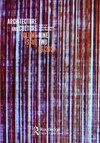Filarete’s Libro and Memoria: The Archive within a Book
IF 1.8
0 ARCHITECTURE
引用次数: 0
Abstract
Abstract The first illustrated manuscript on architecture was produced in the fifteenth century by a sculptor turned architect, known as Filarete (1400–1469). Written as a dialogical narrative, taking place between a patron and his architect, the treatise’s pedagogical tone unfolds as a form of storytelling about the design and construction of an ideal city. Accordingly, the architectural drawings accompanying the text hold a polysemous nature. Disegno constitutes the first step of the design process within the overall narrative, while also providing a visual demonstration of the author’s words. However, the discovery taking place in the story of an illustrated ancient codex – memoria – suggests another way to interpret the architect’s intentions. The literary maneuver of inserting a book within another book and the intertwined nature of word and image allow Filarete to use his Libro to document his accomplishments and the wonders he could build with the support of a devoted patron. Under the semblance of suggesting to his patron to construct a memoria of his buildings, Filarete curates his Libro in the form of an archive, through which, ideologically, he can leave his own name to posterity as an architect.菲拉雷特的《天秤座与记忆:书中的档案》
摘要第一份关于建筑的插图手稿是由雕塑家出身的建筑师Filarete(1400–1469)于15世纪创作的。这篇论文以对话叙事的形式写成,发生在一位赞助人和他的建筑师之间,其教学基调以一种关于理想城市设计和建设的故事形式展开。因此,伴随文本的建筑图纸具有多义性。Disegno构成了整个叙事中设计过程的第一步,同时也为作者的文字提供了视觉展示。然而,这一发现发生在一本图文并茂的古代法典《纪念册》的故事中,这为解读建筑师的意图提供了另一种方式。在另一本书中插入一本书的文学手法,以及文字和图像的交织性质,使Filarete能够利用他的Libro来记录他的成就,以及他在一位忠实赞助人的支持下可以创造的奇迹。菲拉雷特表面上是在建议他的赞助人为他的建筑建造一座纪念馆,但他以档案的形式策划了他的Libro,通过档案,他可以在意识形态上作为一名建筑师将自己的名字留给后人。
本文章由计算机程序翻译,如有差异,请以英文原文为准。
求助全文
约1分钟内获得全文
求助全文
来源期刊

Architecture and Culture
ARCHITECTURE-
CiteScore
0.80
自引率
0.00%
发文量
25
期刊介绍:
Architecture and Culture, the international award winning, peer-reviewed journal of the Architectural Humanities Research Association, investigates the relationship between architecture and the culture that shapes and is shaped by it. Whether culture is understood extensively, as shared experience of everyday life, or in terms of the rules and habits of different disciplinary practices, Architecture and Culture asks how architecture participates in and engages with it – and how both culture and architecture might be reciprocally transformed. Architecture and Culture publishes exploratory research that is purposively imaginative, rigorously speculative, visually and verbally stimulating. From architects, artists and urban designers, film-makers, animators and poets, from historians of culture and architecture, from geographers, anthropologists and other social scientists, from thinkers and writers of all kinds, established and new, it solicits essays, critical reviews, interviews, fictional narratives in both images and words, art and building projects, and design hypotheses. Architecture and Culture aims to promote a conversation between all those who are curious about what architecture might be and what it can do.
 求助内容:
求助内容: 应助结果提醒方式:
应助结果提醒方式:


